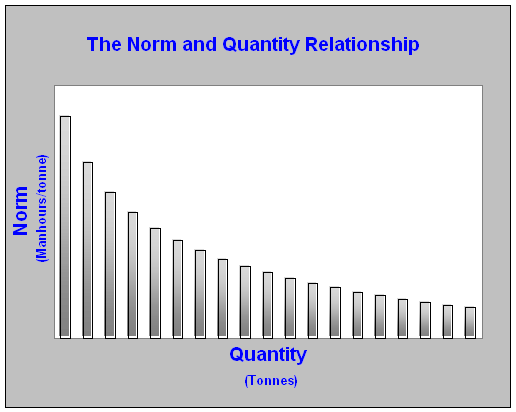|
Lesson #
1:
The
majority of cost overruns are the direct result of malpractices in
budgeting work and fundamental misinterpretations of statistical
(historical)
data.

ALL norms (manhours/tonne) in
CERA Databank show a distinct downward trend with increasing
quantity (tonnes). Historic data collected from numerous
international projects show this to
be true. If your
historic data/cost estimating norms do not
produce
a similar curved shape, your chance of surviving the future
competition is slim. Why? Because the descending
norm/quantity relationship offers a better description of how
manhours and
costs are generated in
projects – infinitely better than single point estimates do.
Study the curve and ask
yourself if this correlation may explain some of the unforeseen cost
overruns you have experienced in your career. Or, maybe you now see
why your company lost a contract to a competitor?
In modern project control work
these curves ultimately govern the selection of technology and
development concept, in addition to being the overall contract
strategy denominator. Thirty years experience from some of the
larges and most complex projects in the world show that:
The majority of cost
overruns in projects are the result of budgeting error and/or
budget-incompatible contract strategy.
For decades focus has been on
Cost Control and Earned Value Analysis issues – but the devastating
cost overruns have continued. If your budget is
undersized,
the best project control system it he world cannot help you. Garbage
in equals garbage out.
To better understand
this we recommend one of our courses in capital cost estimating
(Coming).
Edited
May 2005
| 
